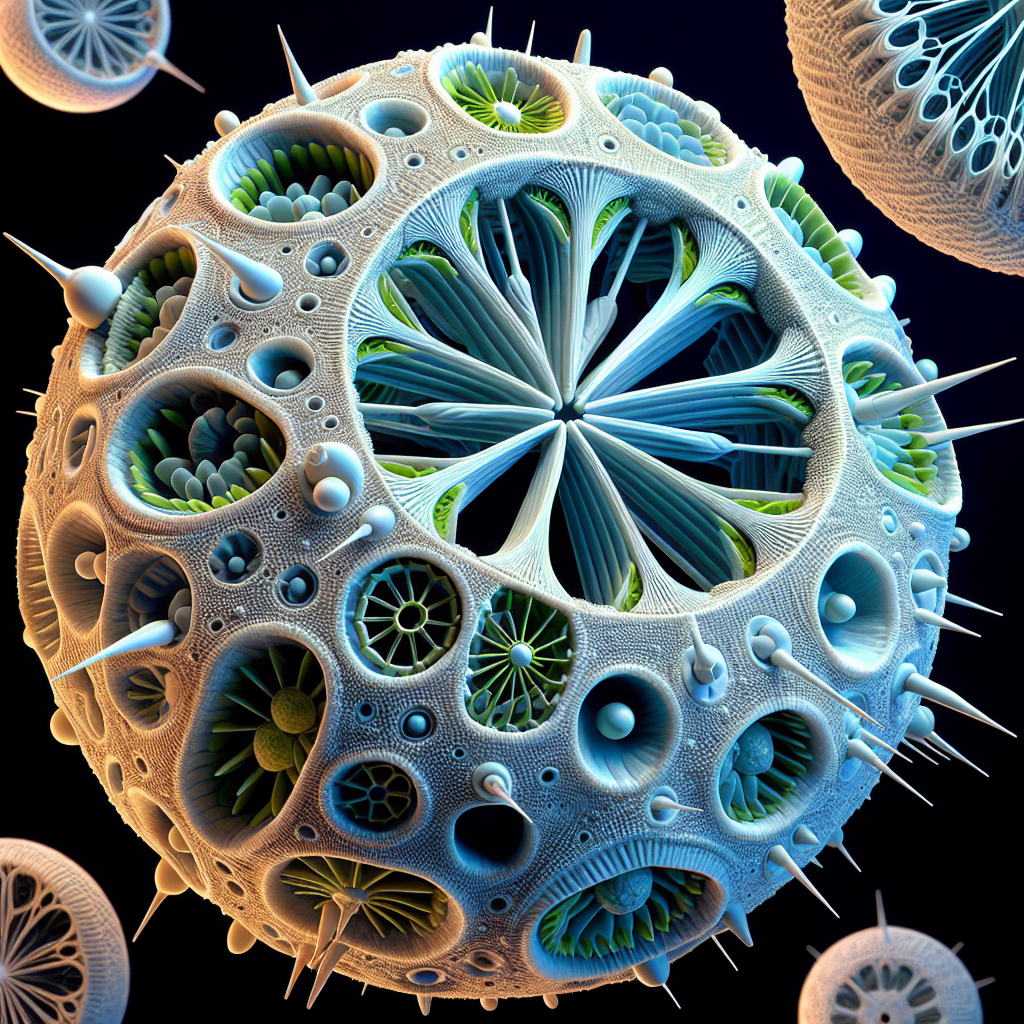Have you ever wondered how tiny, unseen organisms could have such a humongous impact on our environment? Meet Surirellales, a group of diatoms that are a bit like microscopic architects of aquatic ecosystems. They may not have their own TV show, but these fascinating little guys are pretty essential in the world of phytoplankton. They primarily reside in fresh and marine waters across the globe, tracing their lineage back eons. As primary producers, they play a crucial role in the ocean’s food web and in absorbing the planet’s carbon dioxide.
So, what are Surirellales exactly? Picture them as tiny, single-celled algae with intricate silica shells. These shells, known as frustules, are like beautifully designed armor, reflecting the complexity and diversity of life on a minuscule scale. This intricate architecture is uniquely characteristic of diatoms, and the designs can often be astonishing when observed under a microscope. The Surirellales stand out for their elongate symmetry, unlike other diatoms that are more circular. It's pretty wild to think that something so small can have such a significant aesthetic and environmental impact.
Surirellales' importance doesn't stop at their good looks. They play a significant part in energy transfer in their ecosystems. They are primary producers, meaning they convert sunlight into energy through photosynthesis, providing sustenance for a wide array of marine life, from minuscule zooplankton to gigantic whales. Their role in the carbon cycle is crucial, as they capture carbon dioxide from the atmosphere, effectively acting as a carbon sink. This natural process helps mitigate climate change, making the Surirellales an unwitting ally in the fight against global warming.
But like many parts of our natural world, Surirellales are not without challenges. Climate change, pollution, and acidification pose threats that disturb their living conditions and, in turn, their population dynamics. While some argue that nature will always adapt, it’s hard to ignore the fact that these changes in climate and environmental conditions are happening rapidly. Faster than natural selection might cope with.
From a different perspective, some argue that while Surirellales are fascinating, focusing on them might distract from larger issues. Critics sometimes suggest that even addressing such small players may be irrelevant in the grand scheme if we don't tackle the broader causes of environmental degradation. They emphasize the need for comprehensive strategies including significant human behavior adaptations and policy changes.
Yet, dismissing the importance of Surirellales and other micro-organisms might be underestimating their cumulative impact. Each small part of the ecosystem plays a role in the broader environmental picture. Protecting them is like placing a cog back into a machine – crucial for its overall function.
While conversations around them may not grab hectic headlines, diatoms like Surirellales can actually inspire technological innovations as well. Scientists and engineers often look to nature’s innovations to solve human challenges. The perfect symmetry and biomimicry attributes of these diatoms' frustules could lead to breakthroughs in materials science, nanotechnology, and even renewable energy technologies.
Their ability to survive in various environments shows a resilience that could be emulated for designing sustainable structures and materials. Some researchers are exploring how diatoms’ silica shells can inspire new forms of insulation or contribute to more efficient, environmentally-friendly manufacturing techniques.
The preservation of Surirellales and their environments is essential if we want to rely on them to continue performing these multiple crucial roles. Our awareness and responsiveness can help mitigate adverse effects on these micro-algae. Implementing protective measures, reducing pollution, and supporting research empowers not only their survival but enhances our toolkit in battling larger concerns like climate change.
For Gen Z, growing up in the middle of an environment-focused era, recognizing the value of even the humblest forms of life is vital. Our individual actions, from reducing plastic use to advocating for renewable energy, influence the resilience of ecosystems that hinge on all their components. The narrative of the Surirellales resonates with the larger story of ecological interdependence.
As you think about all the bigger steps needed to save the planet, remember the microsteps too. Sometimes, it's the tiniest life forms that remind us of our broader connections and responsibilities.

